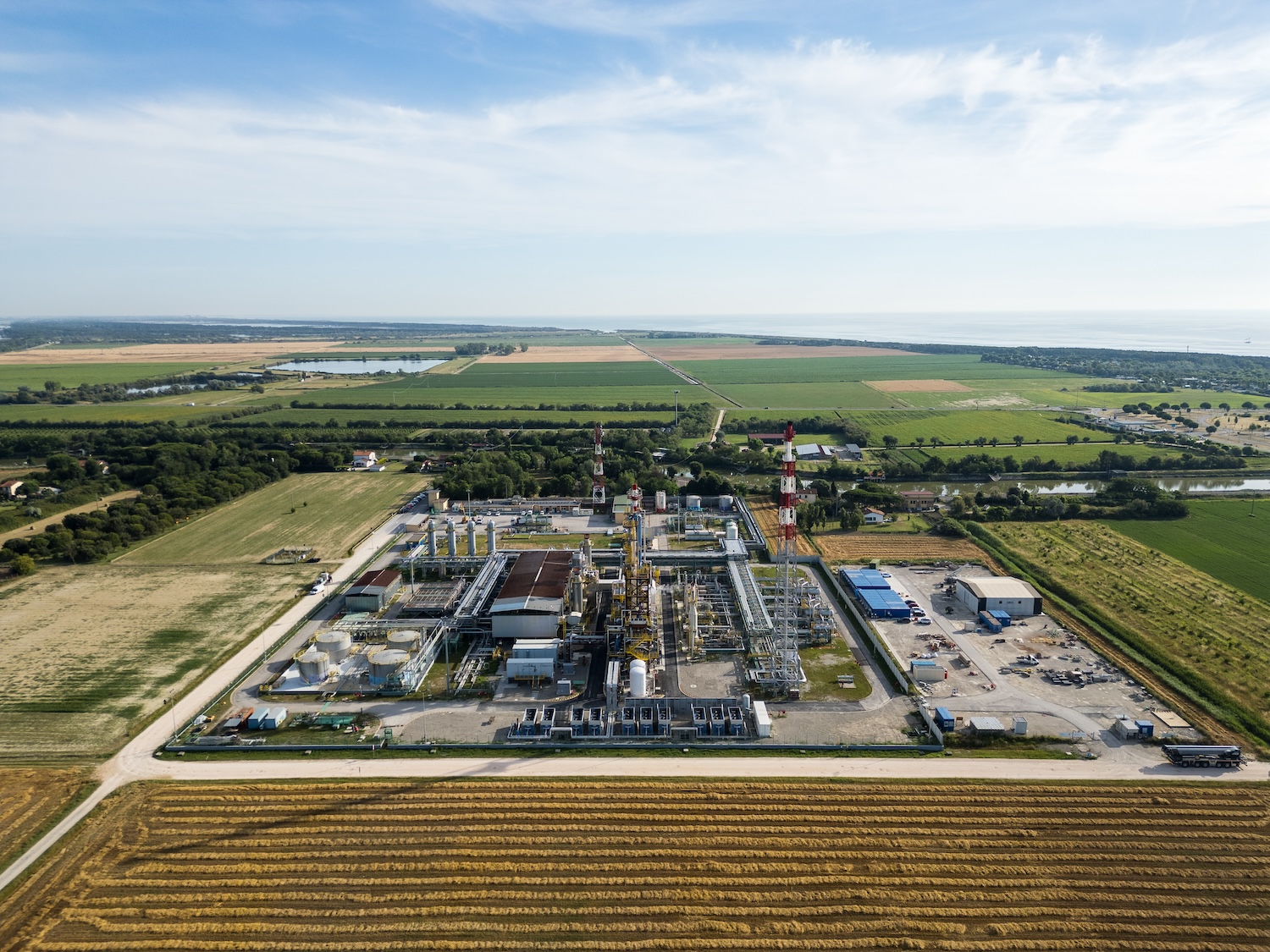The first CO2 storage facility in Italy, the result of a joint venture between Eni and Snam, was inaugurated in Ravenna.
The first CO2 storage plant in Italy has been launched in Ravenna, the result of the equal joint venture between Eni and Snam established at the end of 2022. The ambitious Ravenna CCS project was born with the aim of contributing to the decarbonisation of industries in the so-called “hard to abate” sectors, from cement factories to steel mills and the chemical sector in Italy and, in the future, in European industrial areas for which there are no alternative solutions to CCS that are equally effective, efficient and capable – while protecting employment levels and the ability to produce wealth – of preventing their relocation.
Ravenna CCS technological innovation and the reuse of existing assets
One of the strengths of the Ravenna CCS project is the innovative use of CCS technologycarbon capture and storage, per la conversion of depleted gas fields in permanent CO2 storage sites. Eni, with its long experience in the energy sector, will lead the reconversion of these offshore fields in the Adriatic. This will not only serve to optimize the use of existing infrastructure, but will significantly reduce costs and environmental impact compared to the construction of new sites.
Snam, for its part, will take care of the development of an adequate transport infrastructure, reusing, where possible, existing networks and adapting them to the transport of CO2. This integrated approach, which combines advanced technical skills and pre-existing infrastructure, represents a model of efficiency and sustainability destined to set an example in the world.
A pioneering project
The Ravenna CCS project is not only the first of its kind in Italy, but it is also an example of technological excellence at European level also thanks to the powering of the capture plant of the Casalborsetti power plant with electricity from renewable sources, with the result of avoiding further CO₂ emissions. The first phase, started just this week, involves the injection of 25 thousand tons of CO2 per year into the exhausted field of Porto Corsini mare ovest, captured precisely by the gas plant of Casalborsetti of Eni.
In the coming years, in correspondence with Phase 2, the industrial scale development of Ravenna CCS is planned, which plans to store up to 4 million tons per year by 2030, in line with the objectives defined by the National Integrated Plan for Energy and Climate (Pniec). To this end, the joint venture will start all the procedures necessary to obtain the permits, in accordance with the regulatory framework and in collaboration with the authorities, stakeholders and in particular with the territory. Thanks to the total storage capacity of the depleted gas fields in the Adriatic, the volumes captured and to be stored underground could reach 16 million tons per year based on market demand.
“A project of great importance for decarbonisation has become an industrial reality. The capture and storage of CO2 is an effective, safe and available practice now to reduce emissions from energy-intensive industries whose activities cannot be electrified. We use our depleted deposits, our existing infrastructure and our know-how in reinjection techniques to offer a very competitive service for which we are attracting great interest.“, he declared Claudio DescalziChief Executive Officer of Eni.
An important contribution to the energy transition
Carbon capture and storage (CCS) technology is crucial for the decarbonisation of the so-called “hard to abate” industries that cannot reduce their emissions through electrification alone. The project aims to offer a sustainable solution to reduce CO2 emissions, while maintaining the competitiveness of Italian industries and protecting employment levels.
Eni’s partnership with Snam is equally important: the combination of Eni’s technical know-how in gas field management and Snam’s experience in gas transportation infrastructure management ensures an integrated and highly efficient approach to the project. Collaboration with Confindustria and other industrial partners also ensures that the project effectively responds to market needs.
“The commitment to the Ravenna CCS project is an integral part of our strategic plan and is consistent with our intention to position ourselves as a multi-molecule operator to enable a fair and balanced energy transition, within which we also offer the most energy-intensive subjects the possibility of undertaking decarbonisation paths that preserve their competitiveness.“, he declared Stefano VenierCEO of Snam: “To do so, we leverage our historical expertise in the transport and storage of molecules, with particular reference to the Po Valley, where we are already rooted with strategic assets that have supported the economic and social development of the country for decades. The joint venture with Eni is also part of the same trajectory as similar projects of European interest in which we participate through our subsidiaries in France, Greece and the United Kingdom and from which we expect to be able to draw synergies that are functional to the success of Ravenna CCS”.
Ravenna CCS, a project of common interest for Europe

No less important, however, are the benefits of the project for the territory, for the technological development of the Italian system and for the local economy. Ravenna CCS will create and protect direct and indirect jobs and will help preserve the competitiveness of the hard to abate sectors in Italy, which today represent 94 billion euros of Added Value (5% of the Italian GDP, 2021 data) and 1.25 million employees (4.5% of the national workforce, 2021 data) and which, at the same time, emit 63.7 million tons of CO2, of which 22% are intrinsically connected to the production process and which cannot be avoided through electrification.
In collaboration with Eni
Source: www.greenstyle.it


